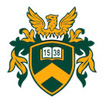Novák Ádám (szerk.): Fontes Memoriae Hungariae III. Varsóban őrzött magyar vonatkozású oklevelek, 1439–1489. Közreadja: Novák Ádám, Tóth Orsolya és Tóth Péter (Debrecen, 2019)
Sobiesław Szybkowski: Polish-Hungarian Relations between 1437 and 1490. A Short Introduction
XXVII offended Bohemian king agreed for a political rapprochement with Matthias (on the congress in Jihlava). However, the Habsburgs reacted quickly and reconciled with the Jagiellons. In exchange, the Jagiellons wanted them to support their actions in the Roman Curia as their aim was to appoint Frederick, the youngest son of Casimir Jagiellon, as Bishop of Warmia. Vladislaus II joined the faction which was adverse to Corvinus and in 1489 he reaffirmed the alliance against the King of Hungary which he had formed with his father, Casimir. 87 In the period in question, the bone of contention between Casimir Jagiellon and Matthias Corvinus was Moldavia. This country was ruled by Stephen the Great who was still manoeuvring between Poland and Hungary and was at the same time trying to protect his sovereignty against the Ottoman Empire. In the first half of the 1480s, the Hungarian side gained the upper hand in this rivalry. However, Matthias was preoccupied with the war in Austria and could not effectively support Stephen in another conflict with Turkey. In 1484 the Moldavian ruler lost the Black Sea ports in Kilia and Bilhorod (Cetatea Albă). Because of that, Stephen asked Casimir Jagiellon for help. The Polish king promised to provide aid if Stephen swore allegiance to him, which he did in Kołomyja in 1485.88 Matthias Corvinus started protesting against the oath of allegiance to the Kingdom of Poland because he considered Moldavia to be a Hungarian fief. Support provided by Poland was not sufficient enough and the Moldavian ruler was forced to make peace with Turkey, agreeing to pay the Ottomans a fixed yearly tribute. This discouraged Stephen from cooperation with Poland. He began the territorial dispute with Poland over the Land of Pokucie, re-established good relations with Hungary and formed a close alliance with Matthias in 1489. 89 Due to the rivalry over Moldavia, the last period of the reign of Matthias Corvinus saw the emergence of a new important factor in the relations between Casimir Jagiellon, Hungary and its ruler. At the beginning of the 1480s, Stephen the Great maintained amicable relations with Ivan III, Grand Prince of Moscow. This was partly the result of Stephen’s plan to marry his daughter, Helene to Ivan Ivanovich, the successor to the Moscow throne. They married in 1483 and it seems that this event gave grounds for initiating the first contacts between the Grand Duchy of Moscow and Hungary. In 1482 the Moscow legate who was sent to Stephen also visited Buda. It was then when Matthias acknowledged that Ivan III of Russia, who had already been jostling with Casimir Jagiellon for 87 Dogiel, Vol. I. 23–25. (see also charter Nr. 78.); Papée, Fryderyk: Polska i Litwa na przeło mie wieków średnich. Vol. 1.: Ostatnie dwunastolecie Kazimierza Jagiellończyka. Kraków, 1904. 244.; Baczkowski, 1995B. 11–19.; Kalous, 2009. 291–302. 88 Czamańska, 1996. 144–153.; Kalous, 2009. 120–121. 89 Czamańska, 1996. 153–161.; Simon, 2009. 405–436.
